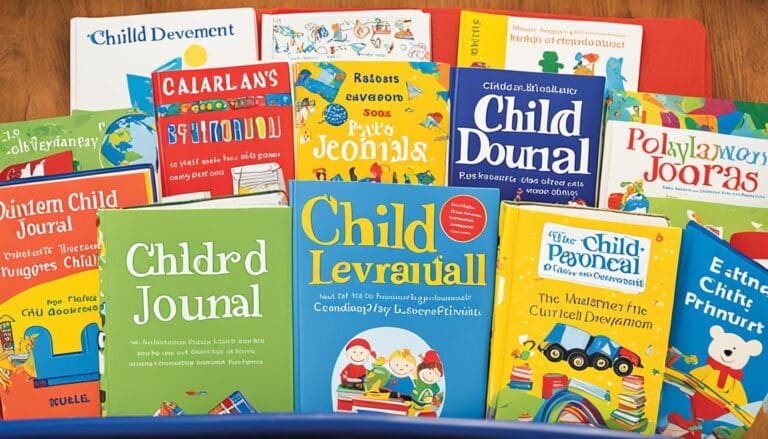Language Acquisition in Young Children: What Parents Need to Know
As a professional in the field of language development, I understand the crucial role that parents play in their child’s speech and language skills. Language acquisition in young children is a complex and fascinating process that begins at birth and continues throughout early childhood. This section will provide essential information for parents about supporting their child’s language development, including the stages of language acquisition, factors influencing language development, common speech and language disorders, practical tips for supporting language acquisition at home, the role of technology, and more.
Key Takeaways
- Language acquisition is a complex process that begins at birth and continues throughout early childhood.
- Parents play a crucial role in supporting their child’s speech and language skills.
- It’s important to create a language-rich environment for young children to promote language development.
- Common speech and language disorders can be identified and addressed with appropriate interventions.
- Using technology can be a helpful tool for language acquisition if used appropriately and with age-appropriate resources.
The Stages of Language Acquisition
Language acquisition is a complex process that takes place over several years. Children progress through different stages of language development, each with its own characteristics and milestones. Understanding these stages can help parents support their child’s language skills.
Prelinguistic Stage
This stage begins at birth and lasts until a child’s first words. During this stage, babies make cooing and babbling sounds and respond to their parents’ voices and facial expressions.
Babbling Stage
This stage usually starts at around six months and lasts until a child is around a year old. During this stage, babies produce strings of sounds that resemble real words and experiment with intonation and rhythm.
One-Word Stage
Children typically enter this stage at around one year old, where they begin to use single words to communicate. They can also understand and follow simple instructions.
Two-Word Stage
As children approach two years old, they begin to use two-word phrases to communicate, such as “me go” or “big dog.” They also start to understand more complex language and engage in conversation-like exchanges.
It’s important to remember that children develop at their own pace, and there is a wide range of what’s considered “typical” language acquisition. If you have concerns about your child’s language development, consult with a pediatrician or speech-language pathologist.
Factors Influencing Language Development
Language development is a complex process that can be affected by a variety of factors. Understanding these factors can help parents support their child’s language development.
Genetics
Research has shown that genetics play a role in a child’s language development. Some children may be more predisposed to certain language disorders or delays due to their genetic makeup. However, genetics is not the only determining factor and early intervention can make a big difference for all children.
Environment
The environment in which a child grows up can also impact their language development. A language-rich environment with exposure to a variety of words and language models can help children develop their language skills. On the other hand, a lack of language stimulation can impede language development.

Social Interactions
Children learn language through social interactions with others. Positive interactions with caregivers and peers can help support language development and language skills. On the other hand, negative or limited social interactions can impede language development.
Early Exposure to Language
Early exposure to language is crucial for language development. It is important for parents to talk to their child as much as possible, read to them regularly, and expose them to a variety of language models. The earlier a child is exposed to language, the better their language development will be.
Creating a language-rich environment and facilitating positive social interactions can support a child’s language development. Understanding the factors that can impact language development can help parents identify areas where their child may need additional support.
Speech and Language Disorders in Young Children
Speech and language disorders are common among young children and can have a significant impact on their development. It is essential to be aware of the signs and causes of these disorders to provide early intervention and support for affected children.
Expressive Language Disorder is a type of speech disorder that makes it difficult for children to express themselves using language. Children with expressive language disorder may struggle to form sentences, use appropriate grammar, or find the right words to convey their thoughts.
Receptive Language Disorder is a type of language disorder that makes it difficult for children to understand language and follow directions. Children with receptive language disorder may have trouble understanding basic vocabulary, following instructions, or comprehending complex sentences.
Speech Sound Disorders are a type of language disorder that affects a child’s ability to form sounds correctly. Children with speech sound disorders may struggle with articulation, making it hard for others to understand them.
| Disorder | Signs and Symptoms | Causes | Intervention Strategies |
|---|---|---|---|
| Expressive Language Disorder | difficulty forming sentences, using appropriate grammar, or finding the right words | genetics, brain development issues, hearing loss, premature birth, environmental factors | language therapy, using visual aids, encouraging child to communicate through writing or drawing |
| Receptive Language Disorder | trouble understanding basic vocabulary, following instructions, or comprehending complex sentences | brain development issues, hearing loss, environmental factors | language therapy, use of visual aids, breaking down instructions into smaller parts, repetition and reinforcement of language |
| Speech Sound Disorders | difficulty with articulation, making it hard for others to understand them | unknown causes, may be related to hearing or brain development issues | speech therapy, phonetic instruction, use of visual aids and modeling correct sounds and articulation |
“Early intervention is essential for children with speech and language disorders. If you suspect your child may have a speech or language disorder, don’t hesitate to seek help from a speech-language pathologist.”
Supporting Language Acquisition at Home
As a parent, there are many ways you can support your child’s language acquisition development at home.
Promote Vocabulary Development
Expose your child to new words regularly by talking to them as much as possible. Use descriptive words to label objects, actions, and feelings. Encourage your child to ask questions and provide answers in return, and help them understand and learn new words through context.
“The more words parents use when speaking to an 8-month-old child, the greater the size of their child’s vocabulary at age 3 and the higher their IQ at age 3.”
– Science Daily, 2019
You can also read books to your child, pointing out objects, characters, and emotions, and asking them to describe what they see and hear. Interactive and educational apps or games, such as Wordplay or Sight Words, can also be a fun and effective way to build your child’s vocabulary.
Encourage Language Play
Language play, such as rhyming games or singing songs, can help your child develop phonological awareness and become more confident in their language skills. Encourage your child to make up their own silly rhymes or songs, or play word games such as I Spy or 20 Questions. These activities can be a fun and engaging way to support your child’s language development.
Enhance Conversational Skills
Having regular conversations with your child can help them develop their conversational skills and learn how to effectively communicate their thoughts and ideas. Encourage your child to ask questions and engage in back-and-forth exchanges. Model good communication skills by actively listening to your child and responding thoughtfully. Family mealtime can be a great opportunity to have conversations and promote language development.

By following these tips and incorporating language-rich activities into your daily routine, you can support your child’s language acquisition at home and help them become confident and skilled communicators.
Language Acquisition and Technology
As technology continues to advance, it’s not surprising that parents turn to digital resources to enhance their child’s language skills. Technology has the potential to make language acquisition more engaging, fun and interactive, and can provide access to resources that might not be available through traditional learning methods.
However, it’s important to approach technology-based learning with caution. While there are some benefits to using technology, there are also potential drawbacks. Research has shown that prolonged screen time can negatively impact a child’s social, emotional and cognitive development. It’s crucial to strike a balance between technology-based learning and other activities that promote language development, such as real-life interactions or hands-on experiences.
When choosing technology-based resources for language acquisition, it’s important to ensure that they are age-appropriate and educational. Some recommended resources include:
| Resource | Description |
|---|---|
| ABCmouse | A digital learning platform that offers educational games, videos, and books for children aged 2-8. |
| Speech Therapy Apps | Apps that focus on specific language skills, such as vocabulary development, sentence construction, and phonetics. |
| Sesame Street | A beloved children’s show that provides entertaining and educational content for young children, with a focus on language development. |
By utilizing technology-based resources wisely, parents can provide their child with an additional tool for language acquisition.
Conclusion
In conclusion, language acquisition in young children is a critical and complex process that requires the support and active involvement of parents. By understanding the different stages of language development, factors that can influence it, and common speech and language disorders, parents can play an essential role in promoting their child’s language skills. Creating a language-rich environment at home and using age-appropriate technology can also enhance language acquisition.
It is crucial for parents to recognize the importance of early language development and seek professional help if there are concerns. Together, we can help young children develop strong language skills that will serve them well throughout their lives. Thank you for reading.
FAQ
What is language acquisition?
Language acquisition refers to the process through which a child learns and develops their language skills. It involves acquiring vocabulary, understanding grammar, and using language to communicate effectively.
At what age do children start acquiring language?
Children start acquiring language from a very young age. They begin to understand and produce their first words around 12 months, and their language skills develop rapidly in the following years.
What are the stages of language acquisition?
The stages of language acquisition include prelinguistic, babbling, one-word, and two-word stages. Prelinguistic stage involves early vocalizations and gestures, while the babbling stage includes repetitive syllables. The one-word stage is when children start using single words, and the two-word stage involves combining words to form simple phrases.
How can parents support their child’s language development?
Parents play a crucial role in supporting their child’s language development. They can engage in conversations, read books aloud, and provide a language-rich environment at home. It is important to respond to the child’s communication attempts and encourage vocabulary development through play and everyday activities.
What factors can influence a child’s language development?
Several factors can influence a child’s language development, including genetics, environment, and social interactions. Exposure to language from a young age, quality interactions with caregivers, and a supportive learning environment can all positively impact a child’s language skills.
What are some common speech and language disorders in young children?
Common speech and language disorders in young children include expressive language disorder, receptive language disorder, and speech sound disorders. Expressive language disorder affects a child’s ability to verbally express thoughts and ideas, while receptive language disorder affects their ability to understand language. Speech sound disorders involve difficulties in pronouncing certain sounds correctly.
How can parents support language acquisition at home?
Parents can support language acquisition at home by engaging in activities that promote vocabulary development, such as reading, singing, and playing word games. They can also encourage language play and provide opportunities for their child to engage in conversations and express themselves.
What role does technology play in language acquisition?
Technology can be a useful tool in supporting language acquisition, but it should be used judiciously and in a balanced manner. Age-appropriate educational resources, such as interactive apps and educational videos, can provide additional language exposure and learning opportunities. However, it is important for parents to monitor screen time and ensure that technology does not replace real-life interactions and experiences.
What should parents do if they have concerns about their child’s language development?
If parents have concerns about their child’s language development, it is important to seek professional help. Speech-language pathologists can assess the child’s language skills, provide intervention strategies, and offer guidance to support optimal language development.






